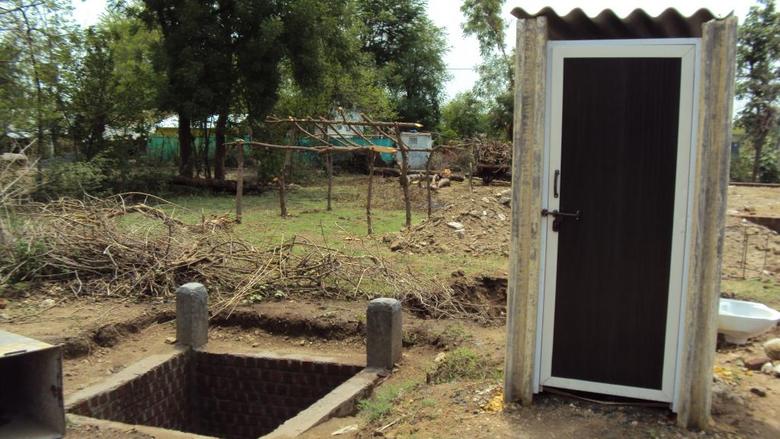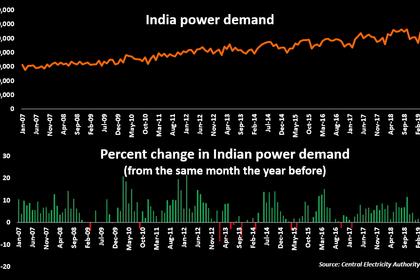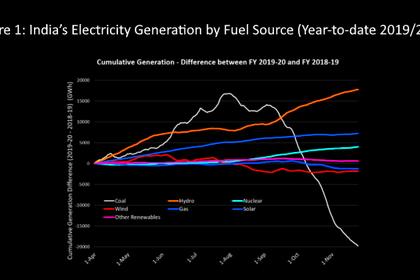
INDIA'S SANITATION ENERGY: $62 BLN

CNBC - Several large multinational companies, including Kimberly Clark, Unilever and Lixil, recently gathered in India with the World Bank, various NGOs and government officials to meet with sanitation entrepreneurs, or sanipreneurs, to address the worldwide sanitation crisis. Their goal: to come up with new ways to turn human waste into valuable resources, including renewable energy.
While toilets and indoor plumbing are taken for granted in developed countries, in the developing world — India, parts of Africa or Southeast Asia — it’s not a given.
According to the Toilet Board Coalition — a business-led partnership created to address the global sanitation crisis — an estimated 2.3 billion people around the world lack access to toilets, which traditionally has been financed by taxes, well-intentioned nonprofits or corporate largesse.
The coalition plans to change that by accelerating the Sanitation Economy, a marketplace of products and services, renewable resource flows, data and information that they claim could transform future cities, communities and businesses.
This crisis has fueled a growing number of companies and sanipreneurs to come up with ways to turn human waste into a profitable business — and a big one at that. In India alone the sanitation economy could be worth $62 billion by 2021, the Toilet Board Coalition estimates.
Creating and maintaining sanitation systems is typically an expensive proposition, but by creating new models for sanitation, companies see a chance to turn what was once an unaffordable cost for governments into a profitable and scalable business opportunity. Typical sanitation systems cost an average of $200 per person, but the Toilet Board Coalition sees a chance to transform that cost to a net value of $10 per person.
To create a business, companies are finding ways to use and reuse resources, in this case human waste.
“What goes down the toilet … it’s a combination of biological materials, water — all resources — provided you can treat the waste,” said Sandy Rodger, chief operations officer at the Toilet Board Coalition, calling it a toilet resource, adding, “As long as you can use it, creating valuable materials, that brings a revenue stream.”
The big business of sanitation
So what does a profitable business look like when it comes to toilets?
First, cut down on infrastructure. Companies have come up with sanitation systems with limited pipes that run to a small, local processing plant, or no pipes at all. Next, create a source of revenue. In the "circular sanitation economy," what goes in the toilet eventually becomes a finished product such as fertilizer or gas. There are even companies that are exploring ways to use digital technology and data collection to provide real-time monitoring of sanitation systems or even insights on health and consumer behavior.
At the recent Sanitation Economy Summit in India, the Toilet Board Coalition brought together large companies such as Unilever, Kimberly-Clark and Lixil with sanitation start-ups on specific projects through its toilet accelerator program.
"Sanitation is an underdeveloped space for social enterprises, so the creativity and commitment of the entrepreneurs working with the toilet accelerator is particularly inspiring," Lisa Hawkes, sustainable behavior change manager for Unilever, said in a statement released by the Toilet Board Coalition. Unilever worked with Garv Toilets, which manufactures stainless-steel toilets that are powered by solar panels and equipped with bio-digester tanks.
Another company in the accelerator, Tiger Toilets, is working with Lixil, owner of American Standard and Grohe, to create toilets that use tiger worms to break down human waste. The worms feed on human waste and convert it to almost potable water and fertilizer.
Toilets need very little maintenance and need to be emptied only every eight to 10 years — less than conventional pit latrines, which need emptying every two to three years. Through the accelerator program, Tiger Toilets has been working with Lixil for help with product design, supply chain, marketing and business development. The toilets are available in India now and are sold to charities as well as direct to households. A toilet package, which includes the toilet structure as well as the worms needed to break down the waste, costs between $300 and $390.
"Lixil believes in supporting new innovations that can contribute to the global goals, particularly in sanitation. Partnership is essential to getting these innovations into the homes and communities of those who need it most," said Erin McCusker, chief strategy officer of SATO, Lixil, and chairwoman of the Toilet Board Coalition.
Another company, Ti Bus in India, is converting old buses into toilets. It costs about $18,000 to convert one unit and an additional $800 a month to maintain, including paying the salary of a full-time attendant. The buses, painted bright pink, are a much needed facility for low-income women and children who might otherwise walk miles to find a safe, quiet spot outdoors to do their business. There are now 10 buses in India. About 70 to 100 women and children use the buses on a daily basis.
Through the accelerator, Ti Bus is working with Swiss fragrance company Firmenich to learn about consumer marketing. "We now have a greater understanding of who our customers are, how they behave and how best to engage them," said Ulka Sadalkar, co-founder of Ti Bus.
It costs 5 rupees to use the Ti Bus. The buses also have additional revenue streams — some have a cafe, laundromat or offer health services. Buses may also get revenue for advertising on or in the buses. Sadalkar said that while the company is not making a profit yet, four of the buses are breaking even.
A large, steady recession-proof market
It's still early days for sanitation as a business, but Venugopal Gupta, director of the Toilet Board Coalition's accelerator program, says he is seeing a shift away from grants or donations to more commercial-grade investment in the space.
"Those changes are welcome. These are not grants or donations. Now you are seeing impact investments with return expectations," Gupta said.
What's driving these investments is a huge market opportunity. Increasing urbanization worldwide is aggravating sanitation issues, which in turn creates environmental degradation that pose a threat to public health. There are large pockets of demand for the likes of Tiger Toilets or Ti Buses in Africa and India.
Not only that, but with sanitation the market is steady. "The demand is recession-proof and not prone to volatility or recessions or booms. It is quite a stable demand, and it's a huge market," said Gupta.
-----
Earlier:














